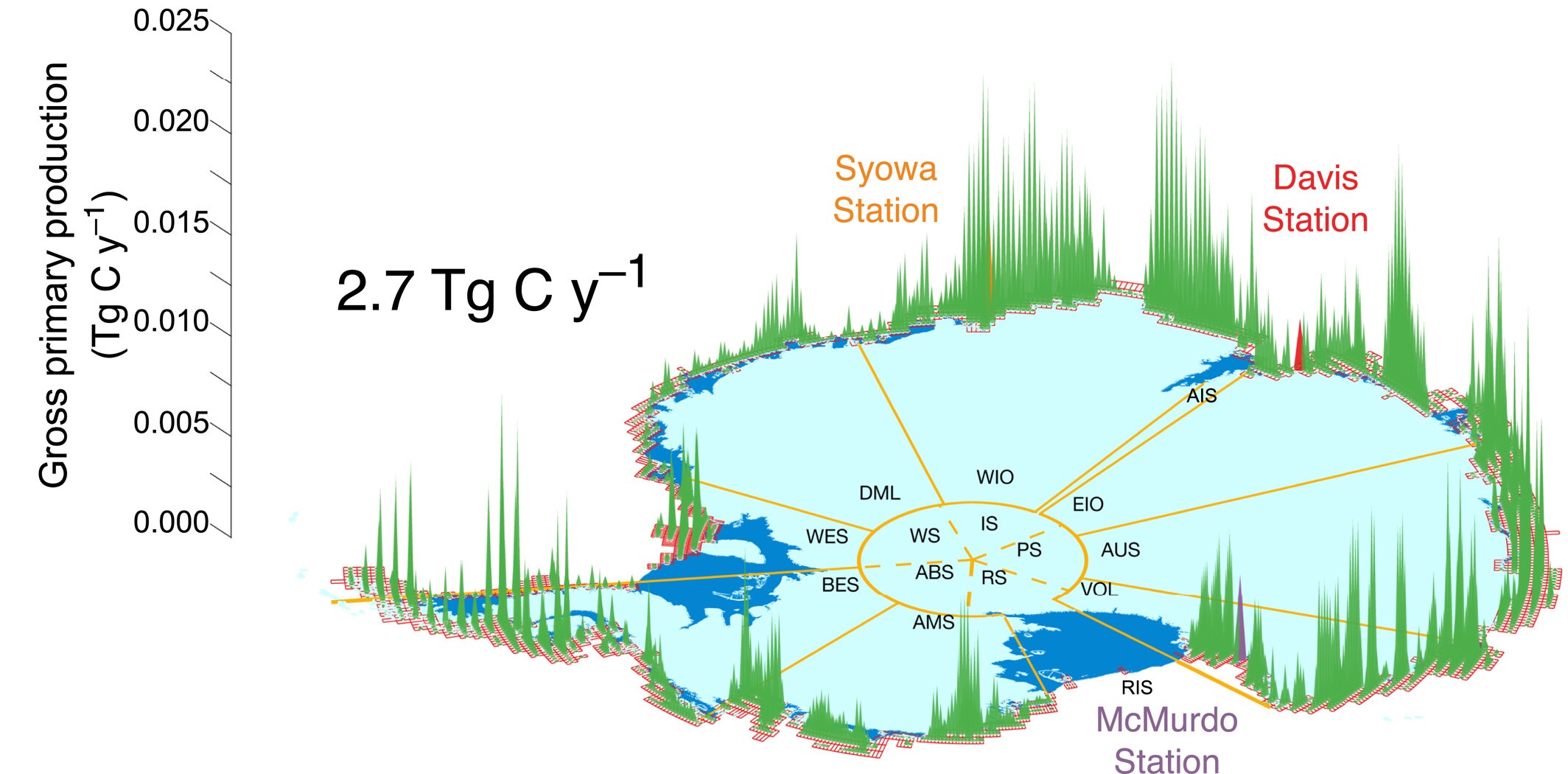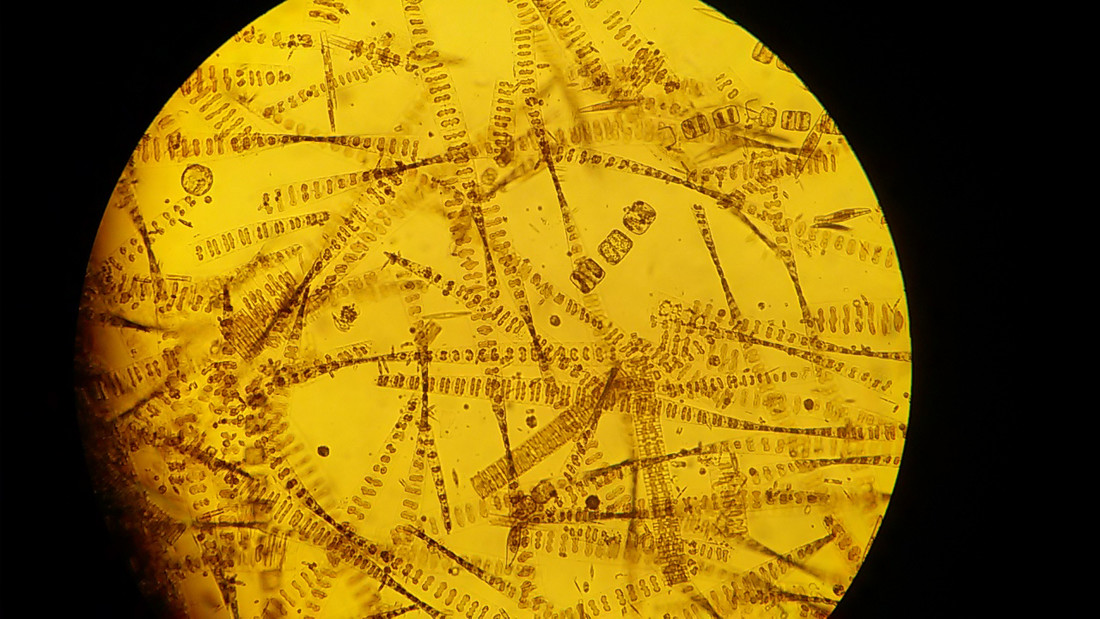Carbon capture: World-first study of algal growth in Antarctic fast ice
7 November 2024
For the first time, scientists have calculated the annual amount of carbon produced by algae living in landfast sea ice, or ‘fast ice’, around Antarctica.
Unlike mobile pack ice, fast ice is stationary sea ice which remains attached to the coastline or among grounded icebergs, covering extensive areas of the Southern Ocean.
Lead author of the study published in Journal of Geophysical Research: Oceans, Dr Pat Wongpan of the Australian Antarctic Program Partnership (AAPP), said that algae growing in the fast ice play a key role in the carbon cycle.

“We had a fair idea of how much primary production is generated by algae in pack ice, and while we suspected fast ice was different, we didn’t know by how much until this study.”
“Our research shows that Antarctic fast ice is annually more productive per unit area than pack ice, in fact 3.3 times higher.”
“We calculate that the mean fast‐ice algal production around Antarctica — the Gross Primary Productivity (GPP) — is 2.8 million tonnes of carbon per year, which is about 12% of the total Antarctic sea‐ice algal production,” said Dr Wongpan.
Modelling fast-ice algae
Because algae inside ice is not visible to satellite or airborne instruments, and actual samples from fast ice are limited, a numerical sea-ice model was adapted to simulate the growth of algae in Antarctic fast ice.
The model represents the ice columns as ten layers of equal thickness with one additional snow layer (important for regulating light levels available for photosynthesis), and simulates the amount of carbon produced by algae for each ice layer.
On top of that, the fundamental limitation of primary production by fast-ice algae in this model-based study is when the fast ice breaks up. This is determined from the first detailed database of changes in fast ice, created by the AAPP.

Gross primary production (GPP) in Antarctic landfast sea ice, from one of the seven experiments conducted with the model, showing 2.7MtC/y for the control run (this study)
“To estimate the GPP, we combined the algal growth model with new satellite maps of fast-ice extent, under varying conditions of light, temperature and salinity. Without AAPP’s fast-ice dataset we could not achieve this estimation,” Dr Wongpan said.
“Our work focused on 2005–2006 as a previous study had estimated total primary production by sea‐ice algae for that year, so we had the basis for comparison.”
Decline of fast ice
The extent of fast ice triples between the seasons, from about the area of Victoria at around 221,000 km2 in mid-March, to more than 600,000 km2 in late September/early October.
The base of fast ice provides a prolific habitat for microscopic algae called diatoms, which are adapted to grow in the low light conditions under the ice.

These ice algae are ecologically important as food sources because their production occurs in locations and at times when algal growth in the water column is limited.
The study suggests that primary production is greater in fast ice compared to pack ice because of higher levels of nutrients from sources along the continental shelf, such as iron.
Dr Wongpan said that understanding the variability of Antarctic fast ice over space and time is important to gauge its impact on polar ecosystems.
“The extent of summertime fast ice has been declining over the last two decades, with a recent dramatic crash in March 2022.”
“What the corresponding change in fast-ice algal productivity means for coastal Antarctic ecosystems and interconnected Earth system processes is currently not well understood. Our work intends to answer such questions,” he said.
Read the paper:
Wongpan, P., Meiners, K. M., Vancoppenolle, M., Fraser, A. D., Moreau, S., Saenz, B. T., Swadling, K.M. and Lannuzel, D. (2024). Gross primary production of Antarctic landfast sea ice: A model‐based estimate. Journal of Geophysical Research: Oceans, 129, e2024JC021348.

Spatial distribution of Antarctic fast-ice extent anomaly in early-mid March 2022. Inset: time series of early-mid March fast-ice extent from 2000 to 2022 (Source: Reviews of Geophysics, CC BY-NC)



